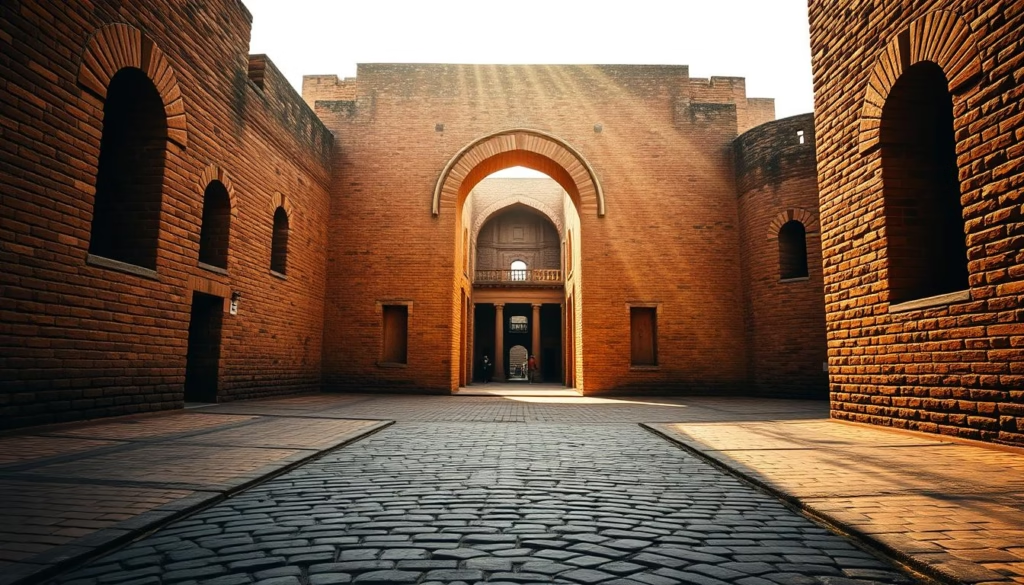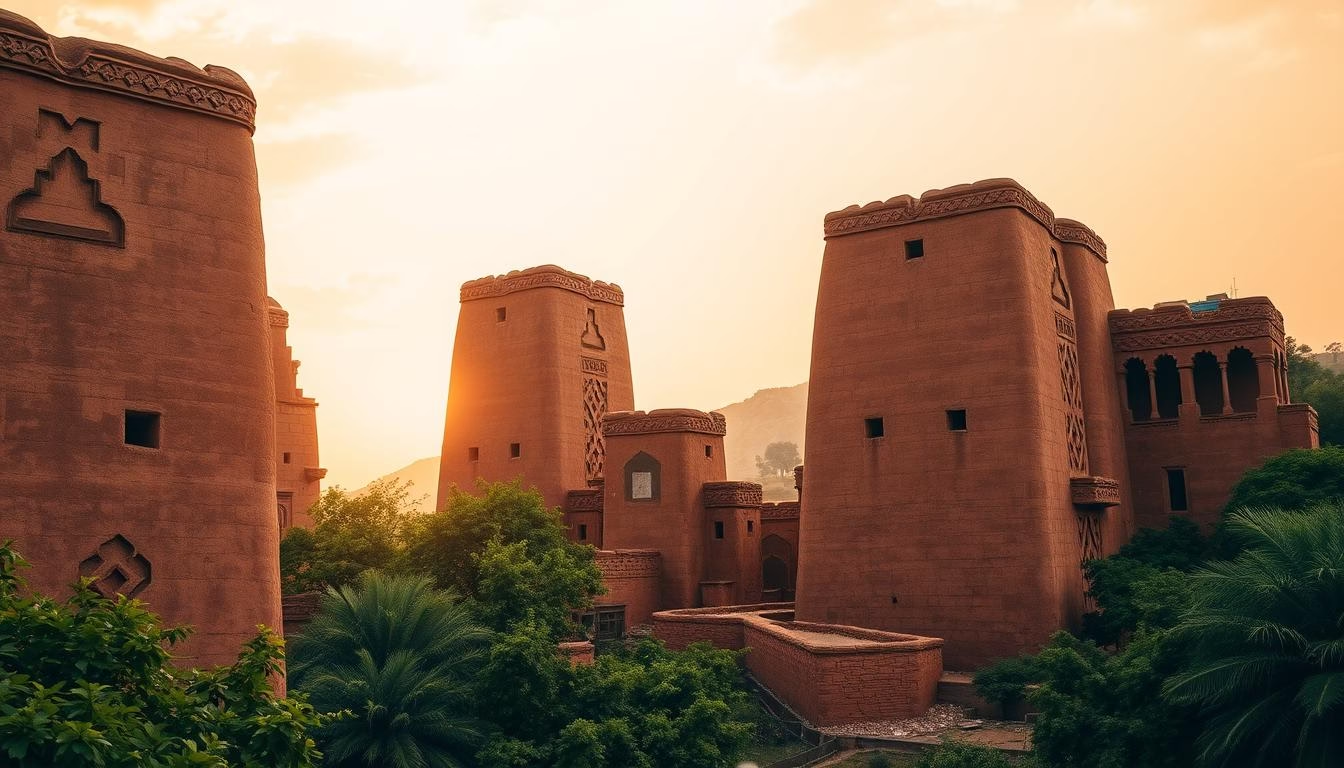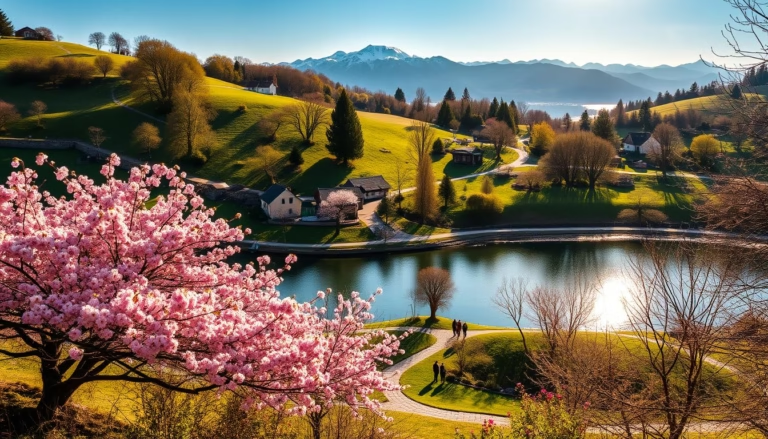Amazing Mud Brick Buildings: Architectural Marvels
For over 11,000 years, communities worldwide have shaped their environments using nature’s simplest recipe: earth. These sun-dried structures—crafted from clay, sand, and organic binders—formed the backbone of early cities and still stand as testaments to innovative engineering. From Mesopotamian temples to Saharan trading hubs, this construction method fueled civilizations long before modern materials existed.
What makes these creations remarkable isn’t just their age. Their thick walls naturally insulate interiors, keeping spaces cool in deserts and warm in mountains. Builders perfected recipes using local soils, often adding straw or husks for extra strength. Some ancient examples still shelter families today, defying assumptions about their durability.
This architectural tradition isn’t frozen in history. Modern designers now revisit these techniques for eco-friendly housing solutions, blending ancient wisdom with 21st-century innovation. The same material that built pyramids now inspires energy-efficient homes, proving sustainability isn’t a new concept—it’s a rediscovered one.
Key Takeaways
- Earthen construction dates back to 9000 BCE, making it one of humanity’s oldest building methods
- Natural composition provides superior insulation and environmental adaptability
- Ancient structures demonstrate unexpected longevity, with some still inhabited after millennia
- Techniques vary globally, reflecting cultural diversity and local material innovation
- Contemporary architects are reviving these methods for modern sustainable design
Historical Journey: The Evolution of Mud Brick Construction
The story of construction begins with the simplest elements: soil and ingenuity. Ancient builders discovered that mixing earth with water and plant fibers could create sturdy shelters. This revelation sparked a global architectural revolution still visible in surviving structures today.

Ancient Origins and Early Techniques
Jericho’s 9000 BCE dwellings mark humanity’s first large-scale use of earthen materials. Workers pressed local clay into molds, bonding layers with wet mud. Mesopotamian builders later shaped distinctive curved-top bricks that locked together like puzzle pieces. These designs improved structural stability in ziggurats and city walls.
Global Spread and Archaeological Insights
Egyptian construction crews perfected their recipe using Nile silt and straw. At Tel Tsaf, 5200 BCE walls stand as proof of ancient durability. Recent excavations show these bricks maintained their composition for five centuries. The Indus Valley civilization mixed sun-dried and fired versions for different building needs.
| Civilization | Key Innovation | Durability Evidence |
|---|---|---|
| Mesopotamia | Plano-convex shapes | Curved tops shed water |
| Egypt | Straw reinforcement | Nile mud structures |
| Indus Valley | Hybrid brick systems | Multi-material walls |
Modern researchers marvel at these early techniques. Strategic placement of stronger bricks in flood-prone areas shows advanced planning. Each discovery rewrites assumptions about ancient engineering capabilities.
Exploring Amazing Mud Brick Buildings
Human creativity transforms humble materials into lasting legacies. Across continents, earthen architecture reveals how civilizations mastered their environments through clever design. Let’s uncover the secrets behind these enduring structures.
Innovative Construction Methods
Builders protect their work from the ground up. Stone foundations prevent moisture damage, while walls use strategic bonding patterns for stability. In Morocco, craftsmen insert palm wood beams called tataoui to reinforce multi-story homes.
Modern advancements like compressed earth blocks show how tradition meets technology. These 20th-century creations use hydraulic presses for enhanced durability. “The best buildings work with nature, not against it,” notes a sustainable architect from New Mexico.
Cultural and Visual Impact
Every region adds its artistic fingerprint. Yemeni towers feature geometric patterns pressed into wet clay. West African builders mix ochre pigments into plaster, creating warm golden hues. These designs turn functional walls into community identity markers.
Natural temperature control remains a standout feature. Thick earthen walls mimic animal burrows’ insulation, maintaining comfortable interiors year-round. This ancient wisdom now inspires energy-efficient homes worldwide, proving good design never goes out of style.
Mud Brick in Global Architectural Context
Across continents, earthen materials shaped civilizations in ways that still command respect. From desert strongholds to coastal settlements, regional approaches reveal how cultures adapted this versatile medium to their needs.
Case Study: Morocco’s Majestic Kasbahs
Morocco’s Anti-Atlas mountains host fortress-like structures that redefine expectations. Six-story kasbahs with Gothic-inspired towers stand guard over valleys, their straw-reinforced walls defying centuries of harsh sun. Craftsmen blended practicality with artistry—crenellations served as both defense and decoration.
In Rissani, entire communities thrived within protective earthen walls. These ksour settlements formed mazes of shared courtyards and shaded alleys. “The walls breathe,” explains a local historian. “They keep heat out in summer and warmth in during cold nights.”
Regional Variations from the Aegean to the Levant
The Aegean region took a hybrid approach. Builders set earthen walls on stone bases to combat moisture—a technique still visible in fragmentary ruins. Meanwhile, Levantine sites show intricate brick patterns that influenced later Roman designs.
Climate dictated material choices. Arid areas used thicker walls for insulation, while humid zones prioritized drainage. These adaptations created distinct visual identities, from Yemen’s geometric facades to West Africa’s ochre-tinted surfaces.
| Region | Key Feature | Functional Benefit |
|---|---|---|
| Anti-Atlas | Straw-tempered mortar | Earthquake resistance |
| Aegean | Stone foundations | Flood prevention |
| Levant | Decorative bonding | Structural flexibility |
Materials, Techniques, and Construction Methods
Ancient builders transformed earth into enduring structures through meticulous craftsmanship. Their methods balanced practicality with local resources, creating formulas that withstand centuries. Today, these time-tested approaches inspire sustainable solutions for modern challenges.
Traditional Mixing, Molding, and Firing Processes
Workers perfected recipes using clay-rich soil mixed with sand and organic matter. Nile Valley crews stomped the blend barefoot, adding straw for tensile strength. The mixture dried in wooden molds under the sun, creating uniform blocks without energy-intensive firing.
Strategic material choices addressed regional needs. Coastal communities used seashell fragments for moisture resistance. Arid zones incorporated animal hair to prevent cracking during extreme temperature shifts. These adaptive techniques produced walls that outlasted generations.
Modern Eco-Friendly Adaptations
Hydraulic presses now create compressed earth blocks in minutes. “This method maintains tradition while meeting modern building codes,” explains a Colorado-based architect. Non-toxic stabilizers like lime replace chemical additives, enhancing durability without environmental harm.
Builders layer palm beams with reed mats for lightweight roofing systems. Moisture-resistant plaster made from clay and plant oils protects surfaces naturally. These innovations prove ancient wisdom remains relevant in contemporary construction practices.
Preserving and Celebrating Mud Brick Heritage
Protecting earthen heritage requires balancing ancient wisdom with modern science. Teams worldwide now employ innovative strategies to safeguard these fragile landmarks while sharing their stories with new generations.
Conservation Efforts in the United States
American preservationists face unique challenges. In New Mexico, teams use thermal imaging to detect moisture in historic adobe buildings. “We’re racing against climate shifts,” explains a National Park Service specialist. “Heavier rains threaten structures designed for arid climates.”
Advanced documentation methods create digital backups. Drones map crumbling walls while 3D scanners record intricate plaster details. These records guide repairs using original materials like clay-rich soil and native grasses.
Heritage Tourism and Site Interpretation
Mali’s Great Mosque shows how living traditions engage visitors. Each spring, communities renew its iconic banco plaster during festive gatherings. Guides explain how grain husks strengthen the mixture—a technique unchanged since 1907.
Interactive exhibits at U.S. sites let tourists test brick-making techniques. In Arizona’s Casa Grande ruins, shaded walkways protect both visitors and ancient walls. Such approaches make architecture accessible without compromising preservation goals.
Modern stabilizers now extend structure lifespans. Lime-based coatings shield surfaces while letting walls “breathe.” These solutions honor traditional aesthetics while meeting today’s conservation standards.
Conclusion
From ancient foundations to modern innovations, earthen construction has shaped human habitats across millennia. These structures showcase humanity’s ability to create durable shelters using local resources—architecture that adapts to climate extremes while maintaining cultural identity. Whether in desert fortresses or modern eco-homes, the same principles apply to buildings worldwide: smart design meets environmental harmony.
Today’s builders draw inspiration from centuries-old techniques. Natural insulation properties reduce energy needs, and non-toxic materials promote healthier living spaces. Preservation efforts at historic sites prove these methods stand the test of time, offering blueprints for sustainable building.
The true value lies beyond physical walls. Each structure tells a story of community collaboration and resourcefulness. As housing demands grow, revisiting these earth-based solutions could redefine how we build—combining ancestral knowledge with cutting-edge technology for a greener future.






